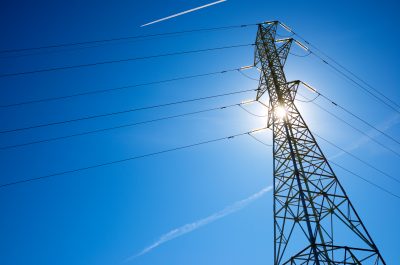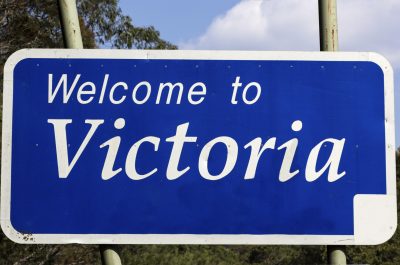What about Carbon Capture and Storage?
Two things happened recently to prompt thought about the role of carbon capture and storage (CCS) in Australia. Firstly, the latest issue of Carbon Capture Journal headlined with “Success at COP21 in Paris gives new impetus to CCS”. Secondly, Dr Fatih Birol, the Executive Director of the International Energy Agency, was in Canberra to discuss the latest energy outlook projections.
During his presentations, Dr Birol emphasised that the emissions reduction target required to limit global warming to 2°C cannot be achieved without CCS, and that this technology will also need to be broadly deployed beyond coal-fired power generation, to gas-fired power generation and industrial processes. Overall, this sounds like good news for CCS proponents.
There should be no doubt that CCS technology works. The 15 large scale projects[1] around the world in operation, and a further seven under construction, prove this. The separation of CO2 is well understood and widely practiced by the gas industry. Injection and storage of gas is also well understood and practiced around the world to store natural gas[2],[3], acid gas and CO2. While technologies are continually improved, the main challenges for widespread deployment of CCS are around the location of suitable storage sites, the regulatory environment and the business case.
What is happening to CCS in Australia?
The Gorgon CO2 re-injection project[4] is soon to be commissioned and will be the world’s largest CO2 storage project. This industry-led project aims to inject between 3.4 and 4 million tonnes of CO2 per annum and will reduce the CO2 footprint of the project by 40%. The CO2 is being separated from the produced gas and will be compressed and reinjected into the subsurface.
Other Australian activities include the CCS Flagships Programme, which consists of two projects still in the early design stage – one being the South West Hub project in Western Australia, and the other being the CarbonNet project in Victoria. The initial objective of the Programme was to have two to four commercial scale projects operational by 2015, although it was quickly recognised that a 2020 timeframe would be more appropriate. It is unclear whether these projects can achieve this timeframe, as progress on both projects has been slow.
There is also an ongoing R&D and demonstration effort in Australia. Most of this appears focussed on geological storage with the two leading centres being the Peter Cook Centre for Carbon Capture and Storage Research[5] and the CO2CRC[6] using their Otway storage facility. Additional funding has been made available from both the Commonwealth[7] and New South Wales[8] Governments to continue research into geological storage. Funding applications to these rounds closed in late 2015, but funding decisions have not yet been made.
So, there is still CCS activity in Australia, but this has definitely decreased since the peak of activity around 2008, when Australia had seven or eight large-scale projects under consideration and a much larger RD&D program.
There appears to be a mismatch between the global calls that CCS will be needed to meet major decarbonisation targets, and the effort in Australia. It begs the question of whether the Australian Government continues to see CCS as part of its climate change policy.
It is clear that renewables are a part of governments’ climate change policies. This is demonstrated through policies such as the Commonwealth Renewable Energy Target (RET), and some state proposals for renewable energy targets (ACT[9], QLD[10]). These have led to a high growth in renewable energy penetration in Australia and have contributed to scale benefits leading to major cost reductions in technology and implementation costs. No such schemes are available to CCS and the 2015 Energy White Paper[11] did not include any major discussion of CCS. The Paper also identifies the objective of:
Investing in Australia’s energy future: ensure a technology-neutral policy and regulatory framework to support new energy sources and enable change, innovation and transformative technologies.
Clearly this remains a work in progress. While renewable technologies are supported by explicit policy mechanisms such as the RET, no equivalent scheme is available for other low emissions technologies, such as CCS.
While we face a carbon-constrained future, there has been relatively strong bipartisan support for Australia to leverage its natural endowment of high quality coal and gas resources.
Addressing the National Press Club in February, Minister for Resources, Energy and Northern Australia, the Hon Josh Frydenberg[12] emphasised a positive outlook for Australia’s mineral and energy exports, noting that India’s coal demand will treble by 2040 and the global gas demand will increase by 50% between now and 2040.
“All this is good news for Australia,” he said.
If our high quality resources are to be used to meet the world’s energy challenges, it is important that Australia aligns these objectives with national and global emissions reduction targets.
Policy settings for CCS
If there is a role for CCS in Australia, what policy settings are required to incentivise CCS projects? A review of the South West Hub project found that:
Government GHG abatement policy changed fundamentally – [There is now…] No carbon price regime so project business case is now invalid[13].
This highlights that CCS projects, as with any other significant energy infrastructure project, require a commercial value proposition to proceed. The Sleipner project, which has been operating since 1990, was established in response to Norway’s carbon tax that was introduced in 1990. The Gorgon project is reinjecting CO2 as part of the undertaking provided in the development approval of the LNG project.
Whatever government or industry support is provided to technology specific R&D, CCS technologies are unlikely to be deployed without enduring, predictable carbon policy framework that is focussed on abatement outcomes, rather than technology-specific inputs. Such carbon policies require implementation through regulatory frameworks that promote investor confidence.
With renewed purpose following the Paris Agreement, Australia now has the opportunity to ensure its carbon abatement policies and frameworks are ‘fit for purpose’ and support least-cost abatement from the stationary energy sector.
[4] https://www.chevronaustralia.com/docs/default-source/default-document-library/fact-sheet-gorgon-co2-injection-project.pdf?sfvrsn=12
[8] http://www.resourcesandenergy.nsw.gov.au/energy-consumers/energy-sources/coal-innovation-nsw/about-coal-innovation-nsw/coal-innovation-nsw-fund-expressions-of-interest-round-2015
[10] http://statements.qld.gov.au/Statement/2015/5/15/queensland-keen-to-capitalise-on-a-solar-future
[13] Carbon capture and storage flagship – South West Hub Project Review Report (2015) http://www.industry.gov.au/resource/LowEmissionsFossilFuelTech/Documents/CCS-western-australian-south-west-hub-project-review-report.pdf (14 November 2015)

